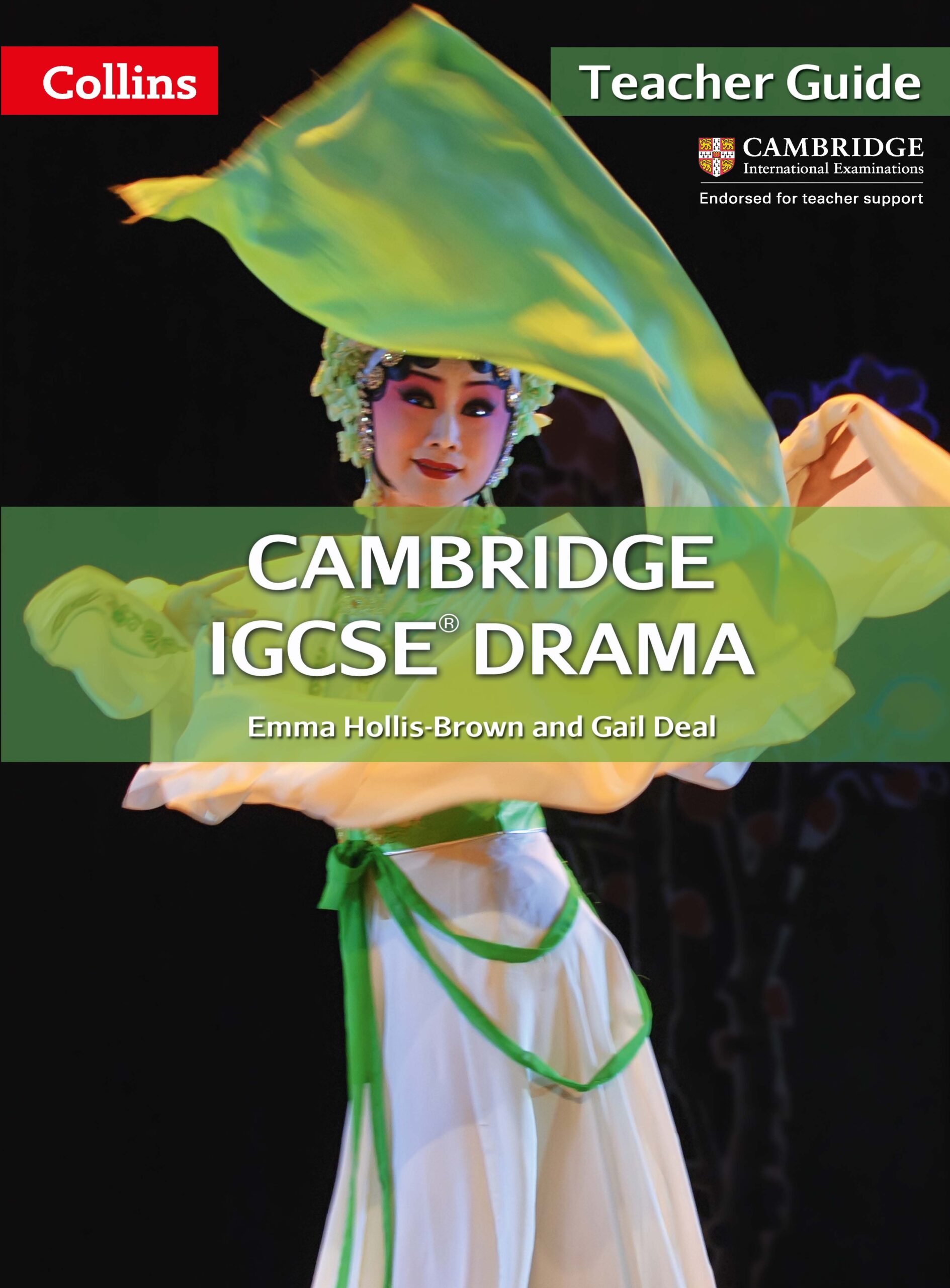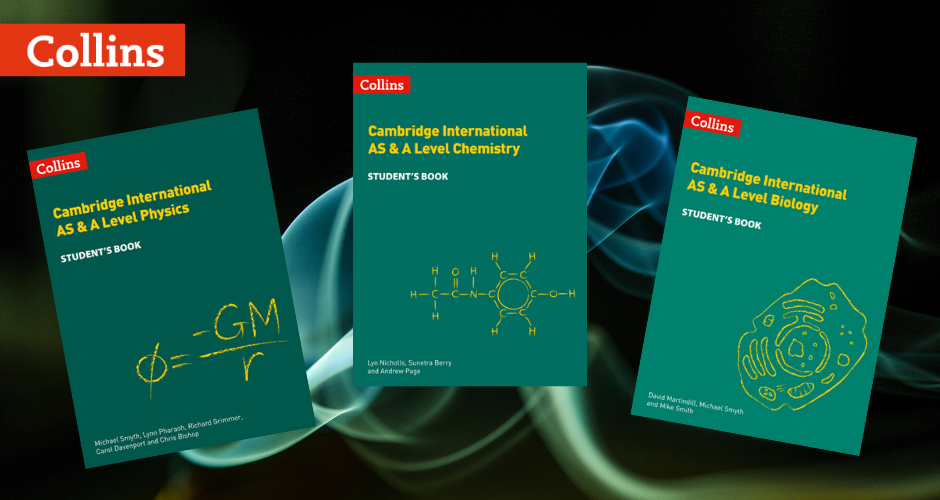 This article has been written by Emma Hollis-Brown, co-author of Collins Cambridge IGCSE® Drama Teacher Guide
This article has been written by Emma Hollis-Brown, co-author of Collins Cambridge IGCSE® Drama Teacher Guide
Many Drama teachers are grappling with the demands of the process of taking a dramatic text from page to stage. The prominence of theatrical text in new specifications appears to align the teaching of Drama with its sister subject, English. There are many advantages to this alignment of the two disciplines, including the opportunity to develop an understanding of narrative patterns as well as genres. A ‘play’ can mean both the written output of a playwright and the staging of their work. The verb ‘to play’ also references the element of anarchy and misrule latent in the imaginations of the spectators. The many genres of the theatre also reflect the socio-political and cultural movements of their time. From the morality plays of the medieval period to the comedies of the Restoration and the tragedies of the Jacobean periods, playwrights have sought to fashion text from the tapestry of life around them.
The Cambridge IGCSE® specification offers schools the opportunity to explore a chosen text to meet the specific characteristics of their student cohort. The current specification (0411) includes the following Assessment Objectives:
Group Text Performance
- Candidates should be able to develop approaches to exploring and rehearsing an extract for performance.
- Candidates will gain understanding of a range of strategies for staging an extract.
Acting skills
- Candidates should be able to demonstrate the ability to communicate a role effectively to an audience.
- Candidates should be able to develop understanding of the impact of interactions between actors on an audience.
The exploration of an extract for performance must be framed by a scheme of work which enables students to understand a number of features of a dramatic text including: language, form, stage directions, character, dialogue. Use of explorative strategies must also be informed by a clear understanding of the components of staging: use of space, production methods, performance skills, relationship between actor and audience. Compelling stories usually contain clear themes, characters and narrative arc (or plot). The art of moving from page to stage is also the act of bringing a range of theatrical elements together to create atmosphere and tension. One of the greatest experiences of a drama teacher comes from watching the expressions of their students change as the story unfolds. The hook which comes from a moment of narrative surprise or a coup de theatre, continues to be eagerly sought by contemporary directors and designers. One of America’s greatest dramatists, Arthur Miller, claimed that ‘the prime business of a play is to arouse the passions of its audience so that by the route of passion may be opened up new relationships between a man and men, and between men and Man’ (Introduction to Collected Plays, 1958). The archaeologists of the theatre who peruse archival records of productions of well known plays also provide us with valuable insights into the methods used by previous companies.
The Collins Cambridge IGCSE® Drama course pays particular attention to the demands presented by the focus on text. The use of extracts from Alan Bennett’s ‘Madness of King George’ offers a useful framework for theatrical analysis. The play was first staged at the National Theatre in November 1991 and praised for its thoughtful exploration of image and reality. Reviewing the production for The Guardian the journalist Lyn Gardner commented ‘the play brings out the fact that amidst all the royal pomp the king is merely a man like everybody else’.
In section 5.4 of the Collins Cambridge IGCSE® Drama Teacher’s Guide there are some ideas for working on a specific extract from the beginning of the play. Initially students could be asked to share some initial responses to the script noting their impressions of the different status of various characters and the tensions between them. The concept of divine monarchy could be introduced to students for discussion, in order to clarify the nature of the relationships between the King and his subjects. It might also be useful to establish the conventions of the period by showing some images of Georgian society and discussing George III’s family tree (there is a handout in the Teacher’s Guide which might be of use here). Students could then be asked to form a tableaux or frozen image for the scene which reveals where the various members of the family might stand in relation to one another. In the next stage forum theatre techniques might be used to experiment with levels and posture. Teachers could try asking students to add a newspaper caption to describe the relationships in the family and then asking one of the actors to include it in the image by speaking it out loud at the point of the freeze. e.g.: ‘Happy Families!’ Students could then work as a whole group to break the scene down into units of action and draw dividing lines where each of the four units start.
Drawing on the previous tableaux activity students might then move to consider performance skills and discuss the impact of movement on the shifting status of characters in the later extract from the play printed in the Student Book. Each group might be allocated one of the units of action to work on. e.g.: start on the stage direction ‘King is strapped into the chair’. In each unit students could highlight 10 key words from the dialogue which express the relationships between characters and create a tracking diagram to plot interactions between characters. On the text students should annotate the possible movements of the character e.g. – turns slowly. Each group could then practically explore the text experimenting with pace and tone by speeding up or slowing down delivery of the lines to emphasise shifting power relationships. After 5 minutes of experimentation the teacher could then introduce the concept of subtext by writing it on the flipchart or whiteboard – asking each group to write a ‘what’s really going on?’ statement on their text extract. Ask each group to add appropriate facial expression, posture and gesture for each character to express the subtext. Ask two volunteers to demonstrate examples to illustrate the difference between what is said and not said by asking them to perform the extract, focusing on the impact of blocking, physicality and facial expression.
By working systematically through the extracts from Bennett’s script it is hoped that students will develop a useful toolkit for future page to stage exploration.
IGCSE® is the registered trademark of Cambridge International Examinations



